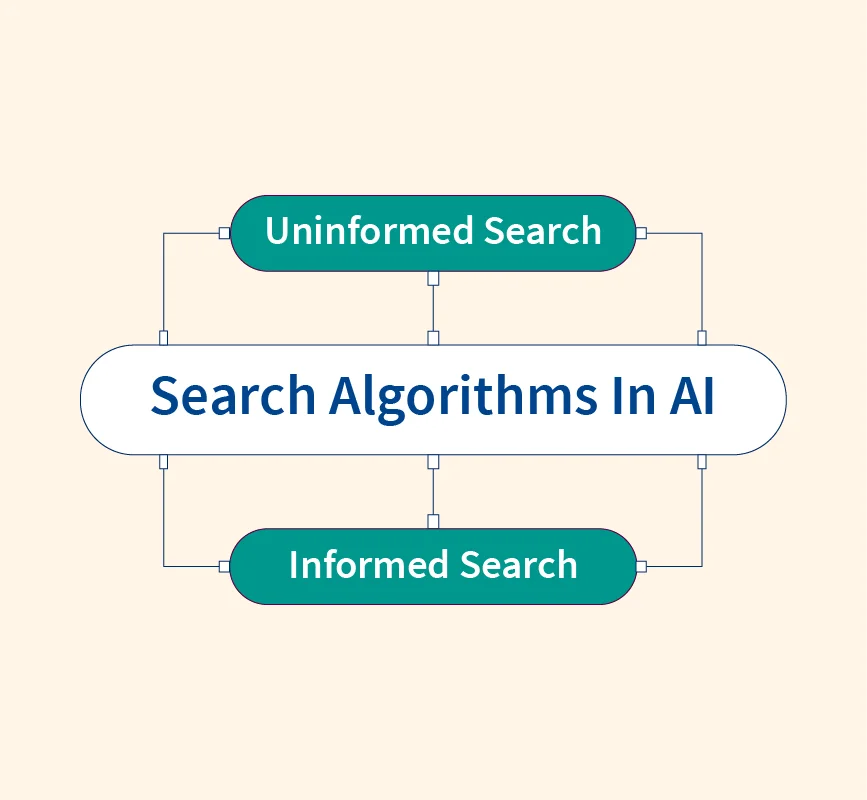Machine Learning (ML) is a branch of Artificial Intelligence (AI) that focuses on enabling computers to learn from data without being explicitly programmed. Think of it as teaching a computer to recognize patterns and make predictions or decisions based on the data it encounters. With the growth of data and computing power, machine learning has become an integral part of modern technology, influencing everything from personalized recommendations on streaming platforms to self-driving cars.
According to IBM, the machine learning market is projected to grow significantly, with a compound annual growth rate (CAGR) of over 44% by 2027. This highlights the increasing importance and demand for machine learning skills across various industries, making it essential to understand its basics.
What is Machine Learning?
Machine Learning (ML) is a technology that allows computers to learn and make decisions based on data. Unlike traditional programming, where developers write specific instructions, ML involves creating models that understand patterns from large amounts of data. The more data these models receive, the better they become at making accurate predictions.
There are three main types:
- Supervised Learning: Models learn from labeled data, like predicting house prices based on features (e.g., size, location).
- Unsupervised Learning: Models find patterns in unlabeled data, such as grouping customers based on behavior.
- Reinforcement Learning: Models learn through rewards and penalties, similar to how self-driving cars learn to navigate.
The History and Evolution of Early Machine Learning
The origins of machine learning date back to the 1950s. Alan Turing, a pioneer in computing, proposed the concept of machines that could think and learn, known as the Turing Test. This set the foundation for machine learning.
Early developments included the creation of Perceptrons in the 1950s and 1960s, which were the first models designed to mimic how neurons work in the human brain. However, limited computing power and data availability restricted their capabilities.
Recent advancements, like increased computing power and access to massive datasets, have led to the rise of deep learning and more sophisticated models. These developments have transformed machine learning into a powerful tool used across industries today.
Why is Machine Learning Important?
Machine Learning is crucial because it automates complex tasks, improves decision-making, and reveals hidden patterns in data. It’s widely used in industries like healthcare for diagnosing diseases, in finance for fraud detection, and in retail for personalized recommendations. By learning from vast amounts of data, ML models can enhance efficiency and accuracy, making them essential in modern technology.
Key Concepts in Machine Learning
Understanding a few basic terms is essential in machine learning:
- Training Data & Testing Data: Training data is used to build the model, while testing data evaluates its performance.
- Features & Labels: Features are the input variables (e.g., age, height), and labels are the output or prediction (e.g., whether a person is healthy).
- Model Training & Evaluation: The model learns from training data, and its accuracy is tested on new data to ensure it generalizes well.
- Optimization: This process involves adjusting the model to minimize errors and improve accuracy.
Common Machine Learning Algorithms
Machine learning relies on various algorithms, each with specific use cases:
- Linear Regression: Predicts a continuous value based on input variables (e.g., estimating house prices).
- Logistic Regression: Estimates the probability of a binary outcome (e.g., classifying spam emails).
- Decision Trees: Splits data into branches to make decisions (e.g., assessing credit risk).
- Random Forests: Combines multiple decision trees for higher accuracy.
- Neural Networks: Mimic the human brain’s structure to identify complex patterns (e.g., facial recognition).
- Clustering: Groups similar data points (e.g., segmenting customers).
These algorithms form the backbone of various machine learning applications, enabling models to make predictions and insights.
Applications of Machine Learning
Machine Learning has diverse applications across various industries:
- Healthcare: Diagnosing diseases, predicting patient outcomes, and personalizing treatment plans.
- Finance: Detecting fraudulent transactions and managing investment portfolios.
- Retail: Powering personalized product recommendations and optimizing supply chains.
- Entertainment: Enhancing user experiences through personalized content recommendations (e.g., streaming services).
- Automotive: Enabling self-driving cars to navigate safely using real-time data analysis
Getting Started with Machine Learning
To begin with machine learning, it’s helpful to learn programming languages like Python or R due to their extensive libraries and community support. You can also use a PDF Estimate Template to organize your initial project plan, estimate data requirements, and document workflow steps effectively. Essential tools include:
- Machine Learning Libraries: Popular ones are Scikit-learn for basic ML tasks and TensorFlow for deep learning.
- Development Environment: Tools like Jupyter Notebook make it easy to write and run code interactively.
- Online Courses & Tutorials: Platforms like Coursera and Udemy offer beginner-friendly courses that provide hands-on experience.
Careers in Machine Learning
The demand for machine learning professionals is rapidly growing. Common career paths include:
- Machine Learning Engineer: Develops and deploys ML models; requires skills in programming and algorithms.
- Data Scientist: Analyzes complex data to build predictive models; combines statistics and machine learning.
- Research Scientist: Focuses on advancing ML techniques and theories, often in academic or corporate research settings.
- Data Analyst: Uses ML techniques to interpret and visualize data insights for decision-making.
- AI Specialist: Designs AI systems and applies ML methods to solve specific business challenges.
- Business Intelligence (BI) Developer: Integrates ML models into BI tools to provide actionable insights for businesses.
The Future of Machine Learning
The future of machine learning is promising, with trends like Explainable AI (XAI) making models more transparent and understandable. As technology advances, we can expect growth in areas such as automated machine learning (AutoML), which aims to simplify model building and deployment.
Additionally, ethical considerations, including data privacy and bias, will play a significant role in shaping regulations and development practices in the industry. As industries continue to adopt ML, its impact will likely expand into new areas such as climate modeling, advanced robotics, and personalized education.
Prerequisites and Tools for Machine Learning
To begin with machine learning, it’s essential to have a foundational understanding and access to key tools:
1. Mathematics:
- Linear Algebra: Understanding vectors and matrices is crucial for many ML algorithms.
- Probability and Statistics: Helps in interpreting data and building probabilistic models.
- Calculus: Useful for optimization techniques, particularly in deep learning.
2. Programming Skills:
- Python: The most popular language for ML due to its simplicity and extensive libraries like Scikit-learn, TensorFlow, and PyTorch.
- R: Often used for statistical analysis and data visualization.
- Familiarity with SQL for database management and retrieving data.
3. Data Handling Tools:
- Pandas: For data manipulation and analysis.
- NumPy: For handling large datasets and performing mathematical operations efficiently.
4. Development Environments:
- Jupyter Notebook: A widely-used tool for coding and visualizing results interactively.
- Google Colab: Provides a cloud-based environment with free GPU access for running ML models.
5. Machine Learning Libraries and Frameworks:
- Scikit-learn: Ideal for beginners to practice standard algorithms like regression and clustering.
- TensorFlow and PyTorch: Popular frameworks for building deep learning models.
6. Version Control:
- Git: Essential for managing code, tracking changes, and collaborating with others.
7. Cloud Platforms:
- AWS, Azure, and Google Cloud: Offer scalable resources and tools like AutoML for deploying and managing ML models efficiently.
Additional Resources on Machine Learning
Algorithms and Models
- Decision Tree Machine Learning
- Svm In Machine Learning
- Logistic Regression Machine Learning
- Regression In Machine Learning
- Linear Regression In Machine Learning
- Knn Algorithm In Machine Learning
- Random Forest Algorithm in Machine Learning
- Cnn In Machine Learning
- Ann In Machine Learning
- Clustering In Machine Learning
- K Means Clustering In Machine Learning
- Hierarchical Clustering In Machine Learning
- Perceptron In Machine Learning
- Types of Machine Learning
- Naive Bayes Algorithm Classifier
- Classification in Machine Learning
- Classification Algorithms
- Polynomial Regression in Machine Learning
- Simple Linear Regression in Machine Learning
- Multiple Linear Regression
- Types of Regression in Machine Learning
- DBSCAN
- Q-Learning in Machine Learning
- What is Neural Network?
- Genetic Algorithm in Machine Learning
- LSTM in Machine Learning
- ID3 Algorithm in Machine Learning
- Multiclass Classification in Machine Learning
- Radial Basis Function in Machine Learning
Model Evaluation & Optimization
- Cross Validation Machine Learning
- Gradient Descent Machine Learning
- Roc Curve In Machine Learning
- Overfitting And Underfitting In Machine Learning
- Bias And Variance In Machine Learning
- Back Propagation Algorithm In Machine Learning
- Em Algorithm In Machine Learning
- Confusion Matrix in Machine Learning
- F1 Score in Machine Learning
- Accuracy in Machine Learning
- Performance Metrics in Machine Learning
- Evaluation Metrics in Machine Learning
- Hyperparameter Tuning in Machine Learning
- Precision and Recall in Machine Learning
- Loss Functions in Machine Learning
- Cost Function in Machine Learning
- Root Mean Square Error (RMSE)
- Model Evaluation in Machine Learning
- Learning Rate in Machine Learning
Ensemble Learning & Techniques
- Ensemble Learning In Machine Learning
- Ensemble Methods in Machine Learning
- Bagging And Boosting In Machine Learning
- Adaboost Algorithm In Machine Learning
- Stacking In Machine Learning
- XGBoost Algorithm
- Bagging in Machine Learning
Feature Engineering & Dimensionality Reduction
- Dimensionality Reduction In Machine Learning
- Pca Machine Learning
- Feature Selection In Machine Learning
- Feature Extraction In Machine Learning
- Feature Engineering For Machine Learning
- Feature Scaling In Machine Learning
- Normalization In Machine Learning
- One Hot Encoding
- Data Transformation
- Singular Value Decomposition (SVD) in Machine Learning
- Data Augmentation in Machine Learning
Concepts and Theories
- What is Machine Learning?
- How Does Machine Learning Work?
- Bayes Theorem In Machine Learning
- Entropy In Machine Learning
- Inductive Bias In Machine Learning
- Concept Learning In Machine Learning
- Linear Algebra For Machine Learning
- Activation Function In Machine Learning
- Hypothesis in Machine Learning
- Epoch in Machine Learning
- Regularization in Machine Learning
- Ridge Regression in Machine Learning
- What is Data Labeling in Machine Learning?
- Vapnik-Chervonenkis Dimension in Machine Learning
- Statistics for Machine Learning
- Instance-Based Learning
- Pruning in Machine Learning
Applications and Processes
- Anomaly Detection Machine Learning
- Sentiment Analysis Using Machine Learning
- Quantum Machine Learning
- Collaborative Filtering
- Candidate Elimination Algorithm In Machine Learning
- Machine Learning Projects
- Gaussian Mixture Model in Machine Learning
- Recommendation System in Machine Learning
- Hidden Markov Model in Machine Learning
- Apriori Algorithm in Machine Learning
- History of Machine Learning
- Multilayer Perceptron in Machine Learning
- Movie Recommendation System Using Machine Learning
- House Price Prediction Using Machine Learning
- Machine Learning in Healthcare
Training, Deployment & Life Cycle
- Machine Learning Models
- Data Preprocessing In Machine Learning
- Machine Learning Life Cycle
- Issues In Machine Learning
- Machine Learning Roadmap
- Machine Learning Syllabus
- Machine Learning Engineer
- Machine Learning Tools
- Machine Learning Course Syllabus
- Java Machine Learning
- Machine Learning Basics
- Machine Learning Datasets
- Machine Learning Pipeline
- Designing a Learning System in Machine Learning
- Machine Learning Steps
Interviews, Questions & Differences
- Machine Learning Interview Questions
- What Is The Difference Between Supervised And Unsupervised Machine Learning
- Difference Between Machine Learning And Deep Learning
- Classification vs Regression in Machine Learning
- How to Learn Machine Learning
- Machine Learning Engineer Salary
- Advantages and Disadvantages of Machine Learning
- Machine Learning Examples
- Machine Learning Books
- Machine Learning Techniques
- Machine Learning Libraries
Special Topics & Challenges
- Curse Of Dimensionality In Machine Learning
- Outliers In Machine Learning
- What is Supervised Learning?
- Semi Supervised Machine Learning
- Unsupervised Learning in Machine Learning
- Data Visualization In Machine Learning
- Linear Discriminant Analysis In Machine Learning
- Bootstrapping in Machine Learning
- Overfitting
- What is Reinforcement Learning?


